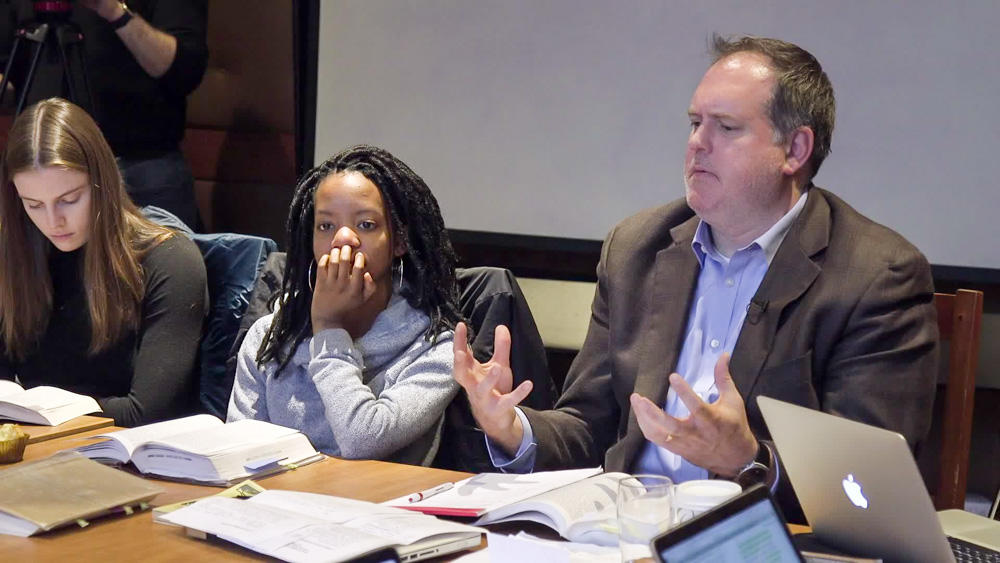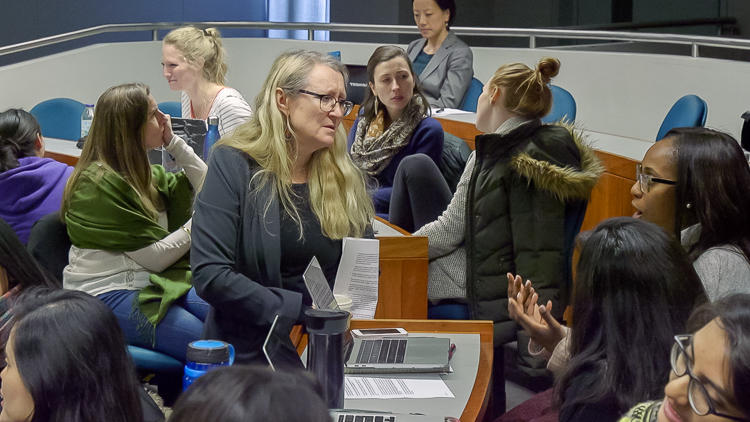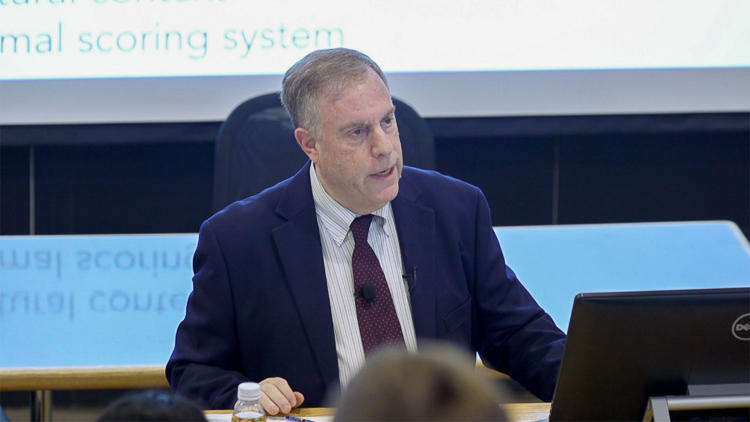Timothy Patrick McCarthy admits that intervening and interjecting in discussions can be an “inelegant art.” If the goal is to have a student-led discussion, then the instructor should mostly let the conversation play out among students. But since the instructor has the end in mind, there are times when he/she should strategically interject to keep the discussion on track. In this video, McCarthy describes the typical pace of his student-led seminar and why he tends to interject more near the end of class.
Knowing when to intervene in the student-centered discussion
Instructor
Timothy Patrick McCarthy, Lecturer on History and Literature
Student Group
Undergraduate/Graduate
School
Harvard College
Course
Stories of Slavery & Freedom
Group Size
16 students
- Note the salient themes and/or unaddressed considerations during discussions and jump in strategically to offer further explanation
- Allocate enough time toward the end of the class or discussion to provide closure, clarify lingering misconceptions, and/or float final, big picture considerations to, as McCarthy puts it, “keep the fire burning”
- One study finds that students’ overall performance improves when direct instruction soon follows peer interaction, a balanced approach to teaching proves beneficial across student ability levels (Smith et al., 2011)
- A comparative study indicates that classrooms regularly employing teacher-student dialogue help foster for students critical thinking skills and deeper understanding of material (Nicol & Boyle, 2010)
- Princeton University’s McGraw Center for Teaching & Learning shares ideas for “What to Do When Class Discussion Stalls”
- Harvard’s Derek Bok Center for Teaching and Learning shares “Techniques for Responding” to student contributions




